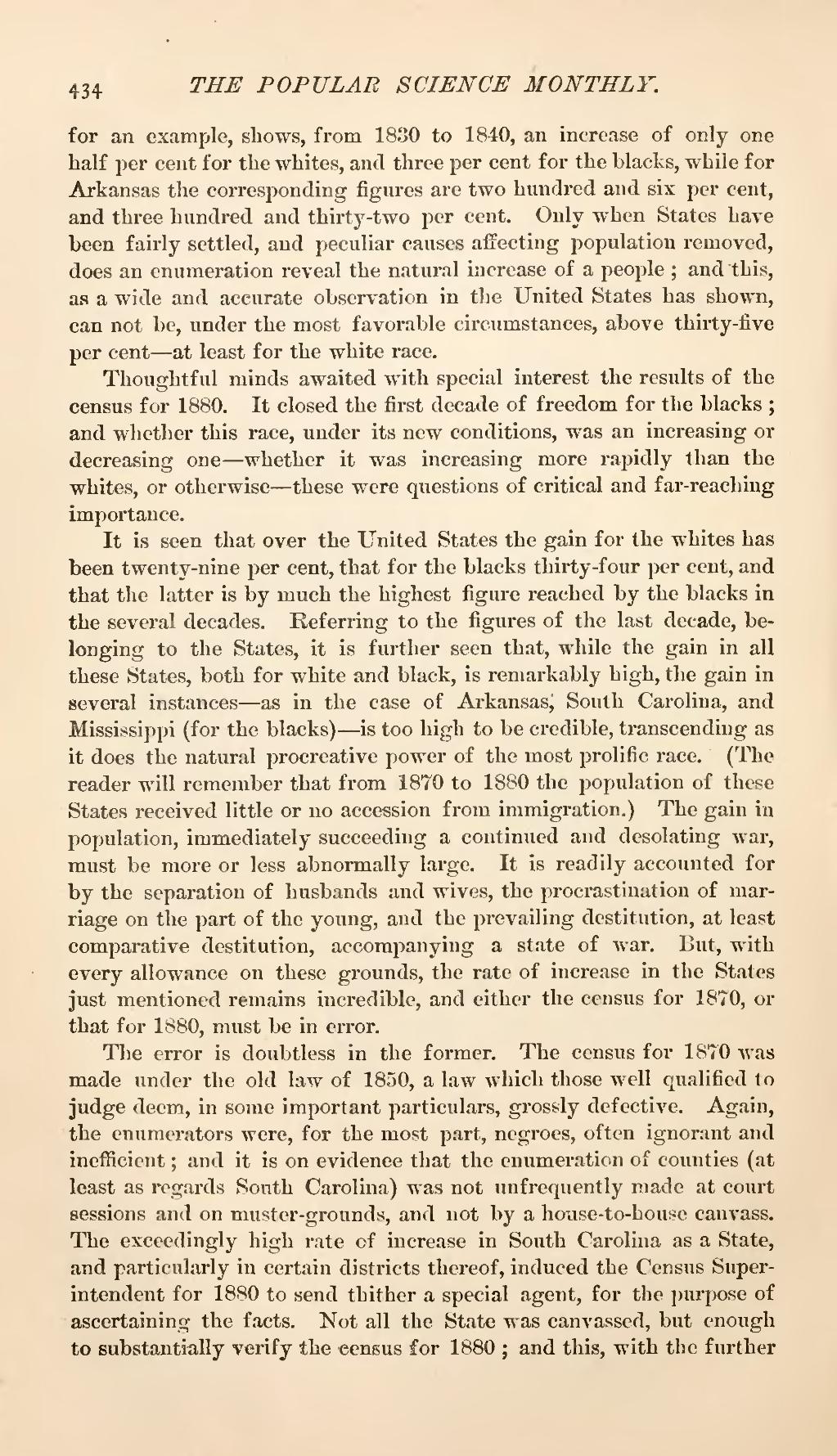for an example, shows, from 1830 to 1840, an increase of only one half per cent for the whites, and three per cent for the blacks, while for Arkansas the corresponding figures are two hundred and six per cent, and three hundred and thirty-two per cent. Only when States have been fairly settled, and peculiar causes affecting population removed, does an enumeration reveal the natural increase of a people; and this, as a wide and accurate observation in the United States has shown, can not be, under the most favorable circumstances, above thirty-five per cent—at least for the white race.
Thoughtful minds awaited with special interest the results of the census for 1880. It closed the first decade of freedom for the blacks; and whether this race, under its new conditions, was an increasing or decreasing one—whether it was increasing more rapidly than the whites, or otherwise—these were questions of critical and far-reaching importance.
It is seen that over the United States the gain for the whites has been twenty-nine per cent, that for the blacks thirty-four per cent, and that the latter is by much the highest figure reached by the blacks in the several decades. Referring to the figures of the last decade, belonging to the States, it is further seen that, while the gain in all these States, both for white and black, is remarkably high, the gain in several instances—as in the case of Arkansas, South Carolina, and Mississippi (for the blacks)—is too high to be credible, transcending as it does the natural procreative power of the most prolific race. (The reader will remember that from 1870 to 1880 the population of these States received little or no accession from immigration.) The gain in population, immediately succeeding a continued and desolating war, must be more or less abnormally large. It is readily accounted for by the separation of husbands and wives, the procrastination of marriage on the part of the young, and the prevailing destitution, at least comparative destitution, accompanying a state of war. But, with every allowance on these grounds, the rate of increase in the States just mentioned remains incredible, and either the census for 1870, or that for 1880, must be in error.
The error is doubtless in the former. The census for 1870 was made under the old law of 1850, a law which those well qualified to judge deem, in some important particulars, grossly defective. Again, the enumerators were, for the most part, negroes, often ignorant and inefficient; and it is on evidence that the enumeration of counties (at least as regards South Carolina) was not unfrequently made at court sessions and on muster-grounds, and not by a house-to-house canvass. The exceedingly high rate of increase in South Carolina as a State, and particularly in certain districts thereof, induced the Census Superintendent for 1880 to send thither a special agent, for the purpose of ascertaining the facts. Not all the State was canvassed, but enough to substantially verify the census for 1880; and this, with the further

